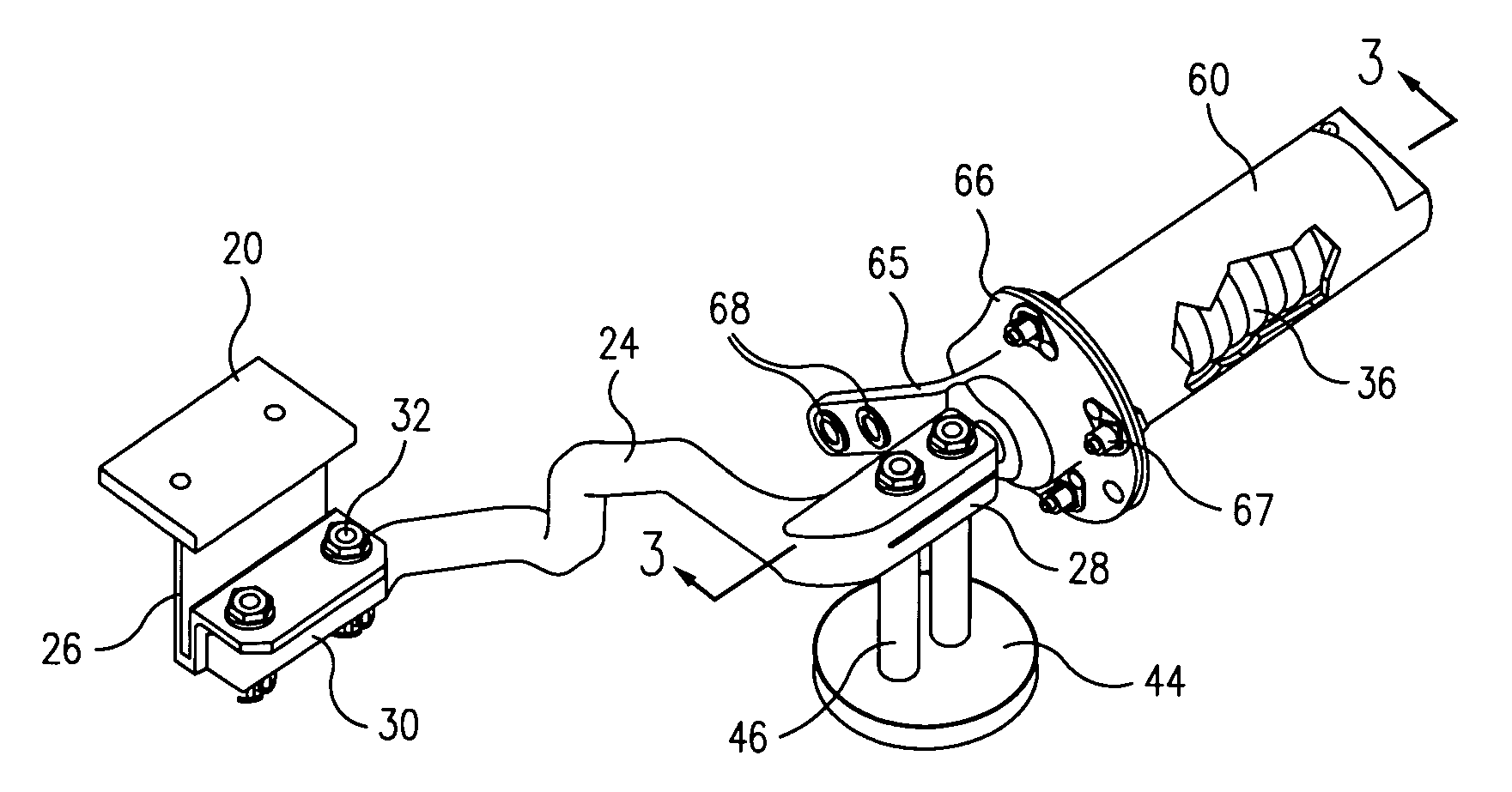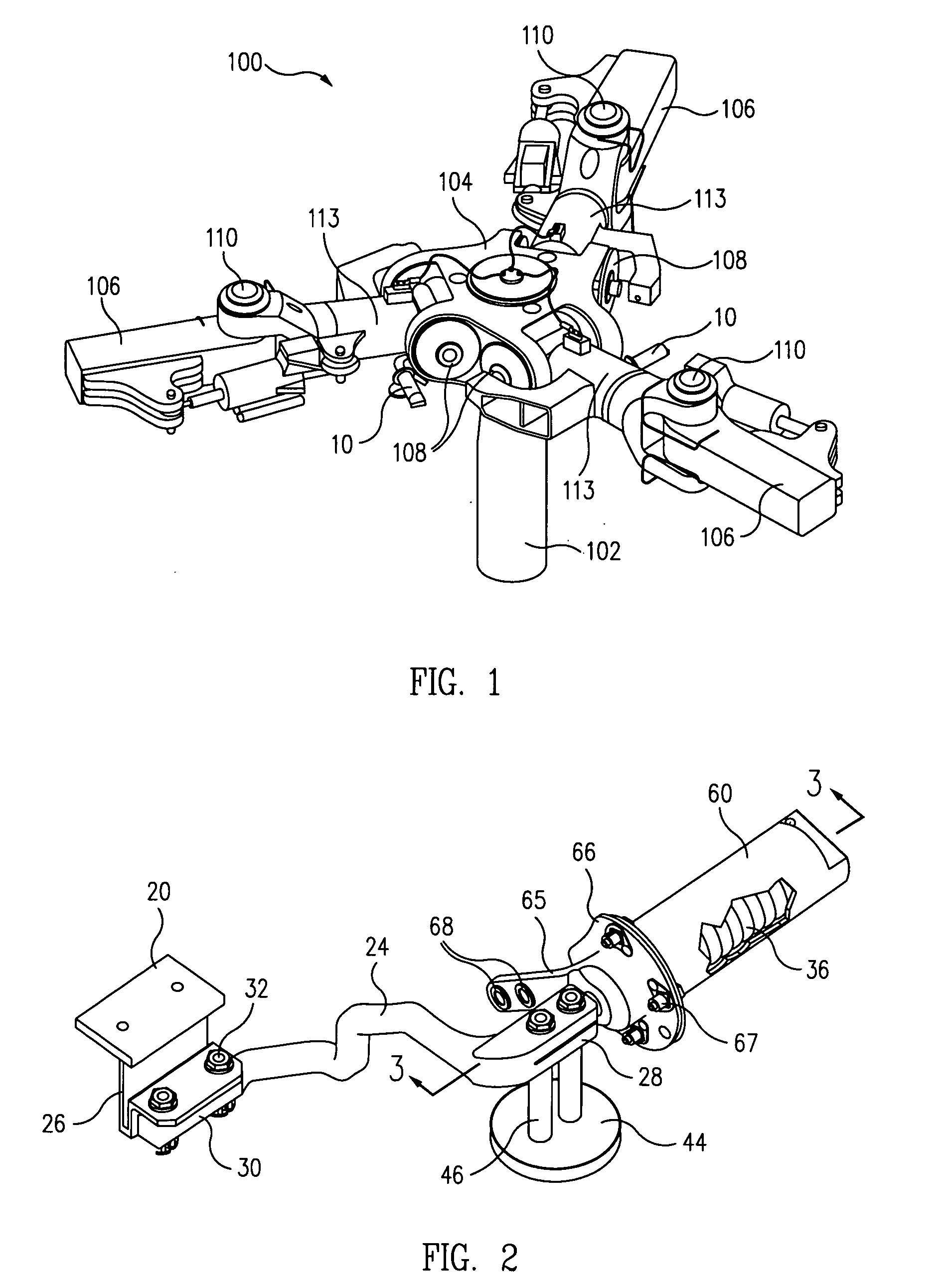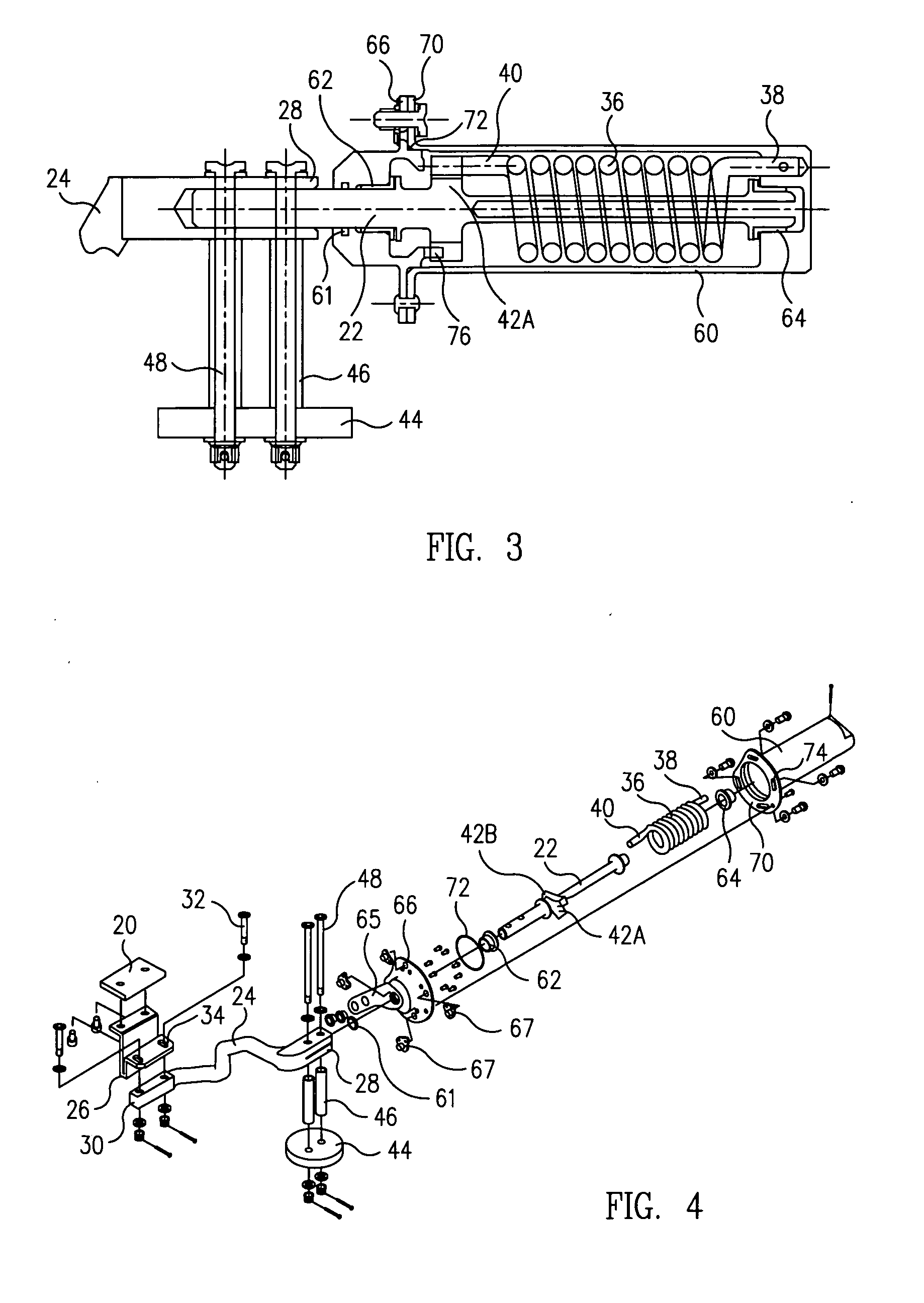Droop stop mechanism for helicopter rotor blade
a technology of rotor blade and stop mechanism, which is applied in the field of aviation, can solve the problems of rotor components being damaged, blades tending to sag more, and more restrictive limits for flapping and drooping, and achieves the effects of easy installation and configuration, small size, and light weigh
- Summary
- Abstract
- Description
- Claims
- Application Information
AI Technical Summary
Benefits of technology
Problems solved by technology
Method used
Image
Examples
Embodiment Construction
[0029]FIG. 1 is a partial top and side perspective view of a main rotor 100 of a helicopter incorporating a rotor shaft 102, a hub 104 disposed at the end of the shaft, and three blades 106 radiating outward from it, each of which is equipped with an exemplary embodiment of a CF-actuated droop stop mechanism 10 in accordance with the present invention. As illustrated in FIG. 1, each of the rotor blades is pinioned to the hub by a pair of hinges, viz., a “flap hinge”108 and a “lag hinge”110 that respectively enable the associated blade to pivot up and down, and fore and aft, relative to the hub. Additionally, the blade and lag hinge are rotatably coupled to the flap hinge by a pitch shaft 112 (see FIG. 6) rotatably contained within a pitch shaft housing 113 for conjoint rotation with the blade about the long axes thereof.
[0030] As respectively illustrated in the enlarged perspective views of the hub 104 and the pitch shaft 112 of FIGS. 5 and 6, the exemplary droop stop mechanism 10 ...
PUM
 Login to View More
Login to View More Abstract
Description
Claims
Application Information
 Login to View More
Login to View More - R&D
- Intellectual Property
- Life Sciences
- Materials
- Tech Scout
- Unparalleled Data Quality
- Higher Quality Content
- 60% Fewer Hallucinations
Browse by: Latest US Patents, China's latest patents, Technical Efficacy Thesaurus, Application Domain, Technology Topic, Popular Technical Reports.
© 2025 PatSnap. All rights reserved.Legal|Privacy policy|Modern Slavery Act Transparency Statement|Sitemap|About US| Contact US: help@patsnap.com



